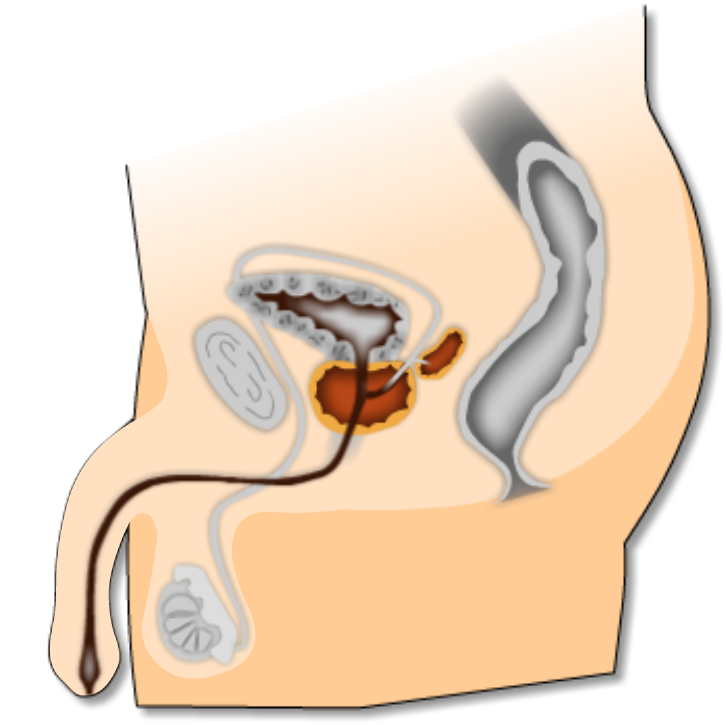Prostate

This male organ is built up of smooth muscles and glandular tissue, and has the size of a 20-gram walnut. It is situated around the urethra, at the basis of the bladder. The function of the prostate is to produce liquids that help the sperm cells to survive (citrate and prostatic acid phosphates- PAP) and to make the semen more viscous (a glycoprotein called PSA).
The size of the prostate usually increases after the man has reached the age of 45, and it can be very large in older men (almost 60 grams). In benign prostate hyperplasia, the urethra is compressed and this leads to urination problems. Size and number of ducts and glands increases, and so do the size of the supporting tissues. In prostate cancer (prostate adenocarcinoma), the disease is difficult to discover because the tumour arise in the peripheral glands of the prostate.
The size of the prostate usually increases after the man has reached the age of 45, and it can be very large in older men (almost 60 grams). In benign prostate hyperplasia, the urethra is compressed and this leads to urination problems. Size and number of ducts and glands increases, and so do the size of the supporting tissues. In prostate cancer (prostate adenocarcinoma), the disease is difficult to discover because the tumour arise in the peripheral glands of the prostate.

Prostate cancer has diffuse symptoms, but one way it can be discovered is by measuring the PSA-level in the blood. This level has shown to increase in cancer patients. It is also possible to feel the prostate by digital rectal exploitation. If the physician suspects cancer, this can be verified or falsified with a needle biopsy.
Our studies on prostate involve ICM ploidi studies, texture analysis and immunohistological studies. Published work and material in progress is listed in the links below.
A total of 1256 samples from 650 patients are included in our study. 625 patients have a prostate cancer diagnosis and 25 are free from disease. The basis is 242 patients treated with radical prostate ectomy.
There are taken samples from one, two or three tumors in the prostate. From 52 patients we have also taken samples from outside the tumor, and this is used for control material in addition to biopsies from 25 patients without disease in prostate. We have a group of 223 patients with prostate cancer not treated with surgery (watchfull waiting). Finally, there are two groups (222 patients) selected related to proven or not proven metastasis to lymph nodes, and we have biopsies from primary tumor (in prostate) and from lymph nodes.
PUBLISHED STUDIES
Our studies on prostate involve ICM ploidi studies, texture analysis and immunohistological studies. Published work and material in progress is listed in the links below.
A total of 1256 samples from 650 patients are included in our study. 625 patients have a prostate cancer diagnosis and 25 are free from disease. The basis is 242 patients treated with radical prostate ectomy.
There are taken samples from one, two or three tumors in the prostate. From 52 patients we have also taken samples from outside the tumor, and this is used for control material in addition to biopsies from 25 patients without disease in prostate. We have a group of 223 patients with prostate cancer not treated with surgery (watchfull waiting). Finally, there are two groups (222 patients) selected related to proven or not proven metastasis to lymph nodes, and we have biopsies from primary tumor (in prostate) and from lymph nodes.
PUBLISHED STUDIES
